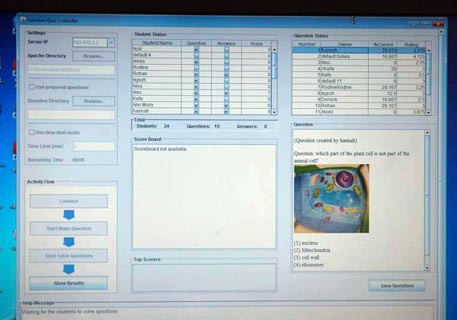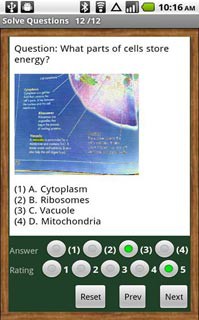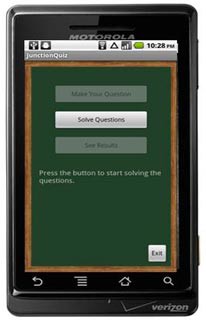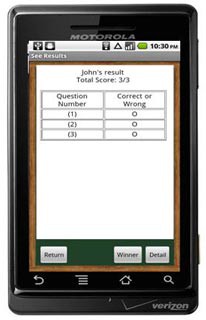SMILE
Description
SMILE (Stanford Mobile Inquiry-based Learning Environment) turns a traditional classroom into a highly interactive learning environment by engaging students in critical reasoning and problem solving while enabling them to generate, share, and evaluate multimedia-rich inquiries.
SMILE is basically an assessment/inquiry maker which allows students to quickly create own inquiries or homework items based on their own learning for the day. For example, students can freely take a photo of a diagram or any other object from their own textbooks or any phenomena discovered in their school garden or lab and create a homework item.
All student-created multimedia inquiry items can be tagged by the generator, but rated by peers to indicate how relevant or useful the item is to their own learning. Obviously, teachers or facilitators could decide to review the student-generated homework items from the homework pool, weed out the ones that may not be relevant and leave only the ones that are highly useful or ones with highest student ratings (i.e., rules could be made at the local level).
The SMILE application enables homework generation, completion and competition game during class. It offers opportunity to review what students learned in class and organize them and create their own inquires from them. Moreover, all student-generated questions are instantly collected, passed out to the whole class and all students are supposed to take a quiz created by all students and also give rating to each question based on standard rule made by local level. After students’ answers are submitted, they can review their results immediately. Through creating own question and sharing it with peers, students are able to check their understanding of what they learned for the day and compensate their lack of learning from peers’ questions. The instant activity blocks students’ learning of the day from fading away and after activity a teacher can give more additional information and detailed explanations to the class which helps them improve their understandings a lot. Quiz activity is controlled by teacher’s application so that students can not get distracted and do other actions. The current prototype of this application supports group/classroom level but village/school level, or community/school district level will be supported soon. Also, it enables a facilitator or teacher to map each inquiry or homework item with appropriate learning standard classifications. The former application is inside the classroom activity and the latter one is outside the classroom activity. The latter application enables students or teachers freely have access to SMILE server regardless of time and place if they have mobile devices. Basically, all homework items created by students are saved on SMILE server, and students can create their own homework items and upload them to the server. Also, they are able to solve homework items connected to the server. Teachers can review all homework items and manage all items to be high quality by seeding out ones which are not relevant to subject or have low-rating by peers from the server. In-out school network system offers continuous learning to all students and then they can pay attention to their own learning saving time and effort, and finally, are more likely to get better understandings of what they learned inside and outside the classroom.
The immediate advantages of SMILE are in that it…
- involves the learners themselves in the reflection and generation of own learning stimuli and inquiries;
- makes it possible to have anytime/anywhere homework/inquiry generation possibility (where there is an opportunistic learning moment);
- empowers the learner to generate and incorporate mobile multimedia objects from own environment;
- allows the learn to rate peer-inquiries based on own assessment of the merit;
- enables a collective management of homework quality;
- enables any group or organization to track the academic performance of the learner at a granular (based on learning standards) level;
- makes it possible to conduct a variety of comparison analyses for benchmarking purposes;
- creates a competition or collaboration game environment.
Pricing
| Plan | Price | Details |
|---|---|---|
| SMILE | Not available | Currently only available to Stanford University School of Education personnel. |







In use in places as varied as Stanford Medical School and remote Kenya, SMILE requires students generate questions on their lessons, then compile and vote on the best questions. Finally, they answer the questions and see the results in real time! High engagement, high transfer of learning because SMILE employs generation, a theory of learning that states when students employ their brains to create this will increase their learning gains.